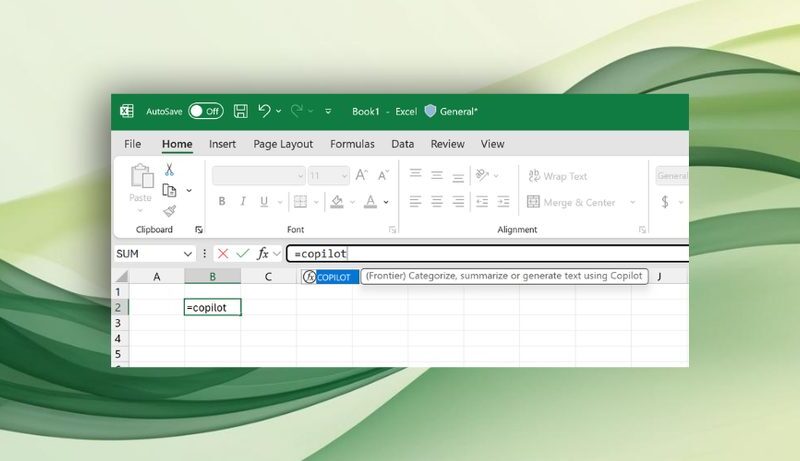Enterprise Resource Planning (ERP) systems have historically been seen as complex, high-cost tools suited only for the largest companies. These high costs and complexity kept many smaller firms away.
However, the technological and organizational aspects of the business environment are becoming more sophisticated and demanding. SMEs face pressure to operate more efficiently, compete with larger players, and respond to customer expectations for speed, transparency, and service. Many are expanding into new markets, managing hybrid workforces, or adapting to supply chain volatility – all of which demand a more structured, technology-driven approach. As a result, SMEs are beginning to realize that software solutions with limited functionality – often aimed at small businesses – can only support their growth up to a point.
As an answer to this challenge, the ERP landscape is changing. Major ERP vendors like SAP, Oracle, Microsoft, and NetSuite have recognized this shift and not only offer new solution packages or extend the current ones to midmarket companies, but also embed standardized best practice business processes into their offerings.
In this article by ACBaltica, a company with 20 years of experience implementing SAP ERP solutions, we’ll look into ERP’s embedded best practices and explore how they help SMEs streamline operations, cut costs, and speed up ERP implementations.
What Exactly Are ERP Best Practices and How Do They Benefit SMEs?
ERP best practices are essentially the standardized, proven operational processes pre-packaged within modern ERP software.
Large on-premise ERP projects traditionally involved extensive customization to match a company’s existing processes. Today, however, another approach is gaining momentum in the philosophy of B2B tool implementation – a shift away from heavy customization.
This new approach focuses on leveraging out-of-the-box best practices and configurations that meet the needs of most businesses with only minimal adjustments. It dramatically reduces costs and accelerates the implementation timeline. Rather than spending months configuring an ERP system from scratch, companies can adopt the preconfigured processes mentioned earlier relatively quickly.
For example, GROW with SAP, a solution package designed for midmarket companies, brings the capabilities of SAP’s flagship S/4HANA ERP within their reach. SMEs choosing this package get access to hundreds of out-of-the-box pre-built processes.
SAP has been perfecting these processes for over 50 years, drawing on its global experience across various industries. It’s an immediate competitive advantage to get your hands on this plethora of industry knowledge.
Instead of reinventing the wheel, an SME can adopt these ready-made business process templates that reflect what has worked successfully for many companies in their industry or functional area. In other words, the ERP software arrives with built-in process blueprints – from processing a customer order to running payroll or closing the books – based on many years of industry experience and refinements. There’s no need to spend resources analyzing and designing, say, an inventory management process from scratch – the ERP’s default process is likely built on industry standards that minimize errors and inefficiencies. This significantly reduces the time and effort needed to get up and running.
In fact, using pre-configured best practices and tools can speed time-to-value for an ERP project. Pre-built best practices also reduce risks: since these processes are tried-and-true, an SME is less likely to hit major pitfalls or compliance issues compared to designing custom processes with no roadmap.
How ERP Best Practices Deliver Value: Industry Efficiency, Easier Compliance, and Practical Solutions
Modern ERP best practices deliver value on multiple fronts. Let’s look at some of the dimensions in which standardized ERP processes help businesses save time and costs.
Examples of Best Practices
ERP best practices cater to common business scenarios that many SMEs encounter during growth. These could be cross-industry situations like rapid growth, expanding to new markets, or moving from manual processes to automation. By following the best practices built into ERP, SMEs can navigate these challenges more smoothly.
Here’s a good example of how following a pre-build process leads to improving cash flow and credit management. Many growing businesses struggle with late payments and credit risks as their customer base expands. ERP best practices often include standardized processes for credit management and collections to tackle this scenario. For instance, Basic Credit Management functionality in SAP helps a company automatically assess customer creditworthiness and enforce credit limits on sales orders. This prevents an SME from overextending credit to a customer who isn’t paying reliably – the system will flag or block new orders if a customer exceeds their limit or has overdue invoices.
Industry-Specific Best Practices
One of the biggest advantages of today’s ERP systems is that they come with industry-specific process best practices baked in. Vendors have developed templates and process flows optimized for various industries, so an SME in, say, retail can use the system differently than a manufacturer would, each using practices proven in their field.
Some examples include retail inventory management: retailers need to avoid excess stock sitting on shelves. ERP best practices for retail typically include automated demand forecasting and reordering workflows to keep inventory at optimal levels. By using these standard inventory management processes, retailers can reduce overstock and carrying costs while preventing out-of-stock situations. In practice, an ERP might trigger purchase orders when inventory falls below a threshold (a process honed by retail industry experience), so an SME store isn’t manually guessing when to restock. The result is just-in-time inventory that improves cash flow and minimizes waste.
Country/Legislature-Specific Best Practices
Another area where ERP best practices shine is in compliance with country-specific regulations and business customs. Running a business in the United States versus, say, Germany, comes with different requirements – from tax law to financial reporting formats – and modern ERPs include localized processes to handle these differences. This is hugely beneficial for SMEs, who often lack dedicated compliance teams.
For example, consider lockbox cash management in the United States, which comes with S/4HANA. Many US banks offer a lockbox service where customer checks are sent directly to the bank for processing. Manually handling lockbox data can be tedious, but ERPs like SAP include a standard process as a best practice. With these processes, a company can automatically collect and process incoming payments through the bank’s lockbox files. The benefit is faster cash application and fewer errors, without the company having to develop a custom solution for bank lockbox integration.
How SMEs Can Align Their Processes with ERP Best Practices
Adopting ERP best practices sometimes requires SMEs to adjust their existing ways of working. This can be challenging – people are used to their routines, which might not initially match the vendor’s way. However, with the right approach, an SME can successfully align its internal processes to the ERP’s best practice processes, reaping the efficiency gains and cost savings we’ve discussed.
Some practical pieces of advice to achieve this alignment include:
- Understand how your processes align with what the ERP system offers: in any ERP project, the goal is to automate as much of the business as possible by using the system’s built-in best practices or other ways the solution provides. That means assessing which of your processes can be adapted to the standard options provided by the software.
- Prioritize standardized processes over heavy customization: it’s tempting to tweak the ERP to fit your old processes, but that defeats the purpose. Remember that customizations are expensive to maintain and can introduce risk. The golden rule endorsed by ERP experts is to only customize if a process is a true competitive differentiator/advantage. For all other processes, it’s best to embrace the ERP’s out-of-the-box process, even if it means changing how your team works.
- For example, if the ERP’s best practice is to approve purchase orders above a certain amount and your company didn’t do that before, consider adopting that control rather than disabling it.
- Leverage built-in compliance and controls: SMEs should take full advantage of the ERP’s pre-packaged compliance features. Make sure you activate and use things like tax calculation modules, electronic invoice formats, or approval workflows – they are there to protect your business and save you effort. Align your financial calendar and account structures to what the ERP best practice suggests (often aligned to common standards) so that you can use the system’s financial closing cockpit or audit report tools with minimal fuss.
Essentially, trust the ERP’s process frameworks, especially in areas of legal compliance, because they have been vetted by experts. This will reduce risk for your SME (avoiding fines, etc.) and also reduce the workload on your team for things like audit preparation or regulatory reporting. Additionally, engaging the expertise of experienced ERP integrators or partners can greatly help SMEs align with best practices.
Conclusion
ERP systems as cloud solutions no longer have to be synonymous with complexity, lengthy implementations, or exorbitant costs. Small and midsize enterprises can dramatically simplify their ERP journey by leveraging industry-proven best practices. These best practices serve as an expert-built roadmap baked into the software, guiding everything from daily invoice handling to strategic expansions, so that an SME isn’t navigating uncharted waters alone.
The payoff is significant: implementation timelines shrink, since there’s less process design from scratch; project costs go down due to fewer customizations and rework; and the result is a system that runs efficiently and is aligned with both industry standards and local compliance from day one.
For CEOs, CTOs, CFOs, and CIOs of SMEs, the message is clear: view ERP best practices as strategic assets in your deployment. Rather than fearing that an ERP will force unwanted change, recognize that it brings improvements that can save time and money if you allow your team to adapt to them. The focus should be on leveraging those standard processes as much as possible, and only differentiating where it truly counts. By doing so, you’ll maximize the ROI of your ERP and avoid the common pitfalls of ERP projects.

